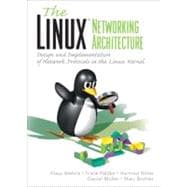
| Preface | |
| The Linux Kernel | |
| Introduction | |
| Architecture of Network Implementation | |
| Layered Architectures, Services and Protocols | |
| Overview of the Linux Network Implementation | |
| Managing Packet Buffers | |
| Network Devices | |
| Layer I & Iimedium Access and Logical Link Layer | |
| Introduction | |
| The Serial Line Internet Protocol (SLIP) | |
| The Point-to-Point Protocol (PPP) | |
| PPP Over Ethernet | |
| ATM on Linux | |
| Transparent Bridges | |
| Layer Iiinetwork Layer | |
| Introduction | |
| The Internet Protocol | |
| IP Routing | |
| The Address Resolution Protocol (ARP) | |
| Group Communication with IP Multicast | |
| IP Security with FreeS/WAN | |
| Quality of Service Using the Traffic Control Tools | |
| Packet Filters and Firewalls | |
| Connection Tracking | |
| Network Address Translation (NAT) | |
| Quality of Service with KIDS | |
| IPv6: The Internet Protocol Version 6 | |
| Layer Ivtransport Layer | |
| Introduction | |
| Transmission Control Protocol (TCP) | |
| User Datagram Protocol (UDP) | |
| Layer Vapplication Layer | |
| Network Programming with Sockets | |
| Mobile IP | |
| RSVP Example of an Object-Oriented Protocol | |
| Appendix | |
| The LXR Source Code Browser | |
| Debugging in the Linux Kernel | |
| Important Network Administration Tools | |
| Example Network Driver | |
| Example Kernel Module | |
| Table of Contents provided by Publisher. All Rights Reserved. |
The New copy of this book will include any supplemental materials advertised. Please check the title of the book to determine if it should include any access cards, study guides, lab manuals, CDs, etc.
The Used, Rental and eBook copies of this book are not guaranteed to include any supplemental materials. Typically, only the book itself is included. This is true even if the title states it includes any access cards, study guides, lab manuals, CDs, etc.